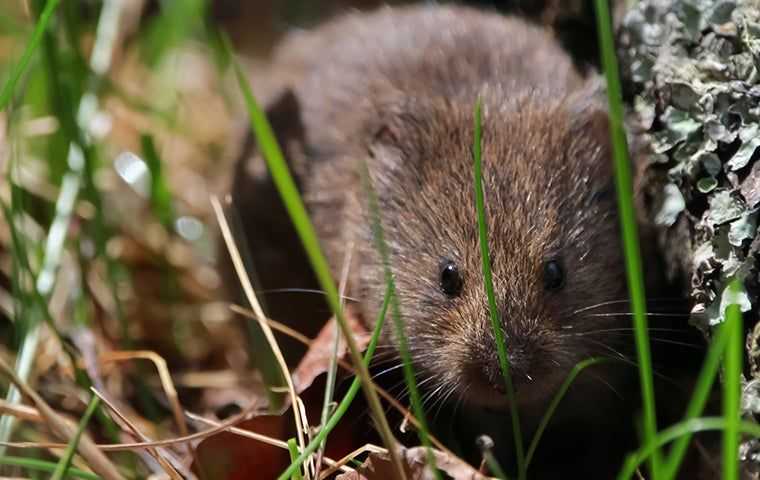Specialist Techniques for Vole Control and Avoidance
Specialist Techniques for Vole Control and Avoidance
Blog Article
Comprehensive Overview to Efficient Vole Bug Control: Problem Recognition and Therapy Techniques
In the world of efficient bug control, vole invasions pose a special difficulty that requires a strategic strategy. These tiny rats, typically mistaken for mice, can inflict havoc on yards, lawns, and crops if left uncontrolled. Identifying the indicators of vole existence and applying targeted therapy techniques are necessary components of an effective bug administration plan. By discovering the subtleties of vole behavior, comprehending vital signs of invasion, and assessing a variety of control alternatives, one can develop a thorough approach to fight these elusive parasites.
Comprehending Vole Habits
Vole behavior is characterized by their burrowing behaviors and fast reproduction rates, making them a challenging bug to control properly. Their rapid reproductive price more makes complex control efforts, with females capable of generating multiple trashes in a single year, each consisting of numerous spawn.
Voles are most energetic during the very early morning and evening hours, investing most of their time foraging for food. Their tunneling habits not just interrupt gardens and grass but additionally make them testing to discover and eliminate. Comprehending vole behavior is crucial for effective insect control techniques. By determining their burrow locations, checking feeding locations, and implementing targeted control techniques, such as capturing or environment alteration, vole infestations can be taken care of successfully.
Indications of Vole Invasion

Prevention Approaches
Carrying out reliable prevention techniques is critical in minimizing vole infestations and securing greenery from their harmful feeding routines. To protect against vole infestations, it check this site out is important to start by eliminating potential food sources and shelter.
Frequently examining the building for indications of vole activity, such as paths and tunnel openings, is important for early discovery and timely activity. If vole task is thought, consider making use of repellents or catches tactically put near their paths. Employing natural predators like owls or snakes can also assist keep vole populaces in check. By implementing a combination of these prevention strategies, garden enthusiasts and property owners can properly safeguard their vegetation from vole damage.
Non-Lethal Control Techniques
To effectively take care of vole populations while focusing on humane techniques, non-lethal control techniques offer functional services for reducing vole damages in landscapes and yards. One reliable technique is making use of physical barriers such as equipment towel or cord mesh to protect vulnerable plants. These barriers can be buried at least 12 inches deep and bent at a 90-degree angle to stop voles from burrowing underneath. Additionally, habitat modification can discourage voles by minimizing their liked food resources and concealing places. Maintaining a well-mowed grass, removing debris, and maintaining plants cut can make the environment much less enticing to voles.

Lethal Control Options
One efficient method for attending to vole invasions in gardens and landscapes involves the calculated usage of deadly control options. When encountered with an extreme vole invasion that non-lethal approaches have stopped working to have, carrying out dangerous control actions ends up being vital. On the whole, when utilizing lethal control options, it is crucial to do so properly and in conformity with local laws to properly handle vole invasions.
Verdict
Finally, reliable vole bug control requires a thorough understanding of vole behavior, identification of indicators of infestation, execution of prevention techniques, and usage of both deadly and non-lethal control approaches. By combining these approaches, people can effectively handle vole populaces you could look here and secure their residential or commercial property from damages. It is essential to attend to vole infestations quickly to helpful site protect against further problems and decrease the impact on the surrounding atmosphere.
Offered the intricate tunnel systems and fast recreation rates characteristic of voles, identifying the signs of vole infestation becomes important in efficient parasite control. One of the primary indicators of vole existence is the existence of surface area runways or tracks in lawn or snow, commonly regarding 1-2 inches large, developed as voles travel in between their burrows and food sources.To efficiently handle vole populations while prioritizing humane methods, non-lethal control techniques use sensible remedies for lowering vole damages in landscapes and yards.One reliable approach for dealing with vole invasions in landscapes and gardens includes the tactical usage of deadly control choices. vole lawn damage.In final thought, effective vole insect control needs a detailed understanding of vole habits, identification of indicators of invasion, application of prevention strategies, and utilization of both dangerous and non-lethal control techniques
Report this page